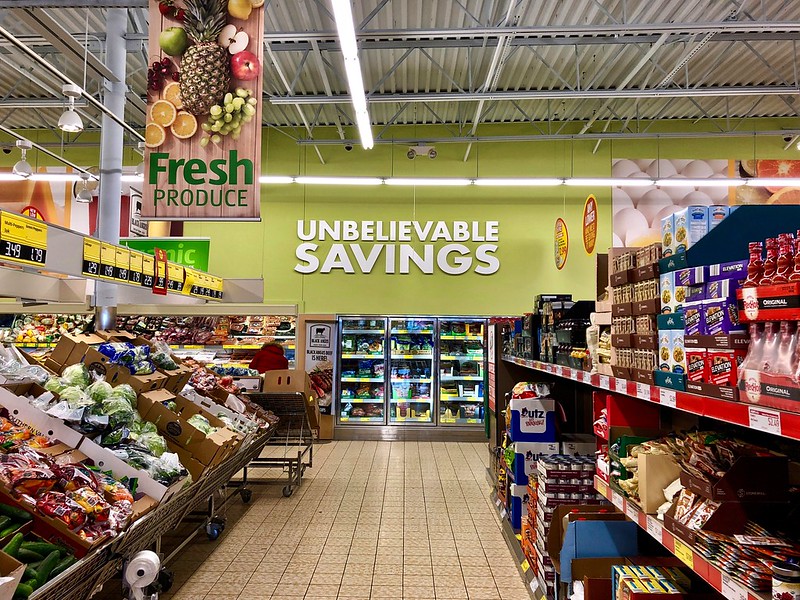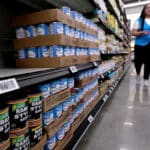There are some grocery products you may only buy at a certain store – one that you know and trust to provide the best quality and value. And then there are products you’ll buy just about anywhere, wherever the price is right.
And the first grocer that figures out how to be all things to all people, by getting everyone to buy all of these products in its store, may well turn out to be the greatest retail success story of all time.
Until then, more and more shoppers are visiting multiple stores in search of the best deals that can help make a dent in their ballooning grocery budget. That’s according to the latest edition of the dunnhumby Consumer Trends Tracker.
It’s “one of the major trends” that dunnhumby says its latest survey of thousands of grocery shoppers has revealed. Four in ten shoppers say they mostly or always shop around at different stores in order to find the best deals. That’s up 5% from the last time dunnhumby asked just a few months earlier, and up 9% from this time last year. “This is one of the fastest and most consistent growth trends” dunnhumby says it’s seen.
When asked what specific products they’re most likely to buy wherever they can find the lowest price, 60% of shoppers said non-alcoholic beverages like bottled water, sodas and sports drinks. 55% seek out the best deals on packaged food products, and 54% said frozen food items.
Conversely, the products they’re most likely to buy from only one trusted retailer are pharmacy products, cited by 46%. One in four said baby care items, 23% said deli meat and 22% prefer to buy freshly-prepared ready-to-eat meals from one favorite store.
“The categories driving retailer exclusivity are often ones where quality is most important,” dunnhumby observed, while “categories where customers are happy to shop around tend to be price-led.”
Makes sense – with the exception of their price tags, all bottled drinks and packaged food products are pretty much the same no matter where you go, while you might be a little more choosy about where you buy baby products and fresh food.
But shopping around takes time and effort, as you search through sales circulars and drive from one store to the next. So why is it becoming so commonplace, that nearly half of all shoppers now do it regularly?
There are a couple of answers, and the first is somewhat obvious. While the inflation rate is falling, many shoppers aren’t feeling it. So with prices elevated, seeking out deals is becoming far more important. dunnhumby found that 44% of shoppers now say they frequently use coupons and take advantage of loyalty program deals, up 6% from a year ago. 40% say they check prices online either before or during a shopping trip, up 9% from a year ago. And the most troubling statistic relates to what happens when some shoppers can’t find good deals – more than a third of families say they have skipped meals altogether because they simply can’t afford them.
As a result, shoppers’ desire to save money is increasingly overriding their desire to save time. Over the past year, “there’s been a moderate, but steady, decline in the importance of ‘speed’ attributes,” dunnhumby noted. While shoppers still like a store with a fast and easy checkout experience where they can get in and out quickly, fewer consider it a must. “We can conclude that many of the Covid-type behaviors – where speed became so important as a proxy for safety – are now behind us,” dunnhumby’s report stated. “Instead, customers are shopping around, browsing products, and looking to interact more with their grocery shopping once again.”
So the implications of its findings are clear, dunnhumby concludes. Retailers need to ensure they’re attracting loyal shoppers with high-quality products that they prioritize, while attracting less-loyal shoppers by promoting low prices and good values on everything else. For instance, “an effective campaign could advertise soft drinks on Instagram (a category customers are very willing to shop around for),” dunnhumby advises, while a corresponding advertising campaign “might emphasize the quality and emotional aspects of baby care products via Facebook (a category more likely to drive loyalty).”
When it comes to groceries claiming an oversized portion of household budgets, “there doesn’t appear to be relief in the short term for many Americans, especially those who are already food and financially insecure,” Matt O’Grady, President of Americas for dunnhumby, said in a statement. “Consumers changing shopping behavior over the last year, including cross-shopping stores for the best prices,” he went on, “has created an opportunity for retailers and brands to engage with them in a personalized way… deliver(ing) to them tailored content and offers that provide real value.”
In this increasingly competitive environment, where many of our grocery purchases will be made at the store offering the best deals, it may ultimately be the case that those retailers who aren’t responding to shoppers’ needs, will lose out to those who do.
Image source: F Delventhal
















